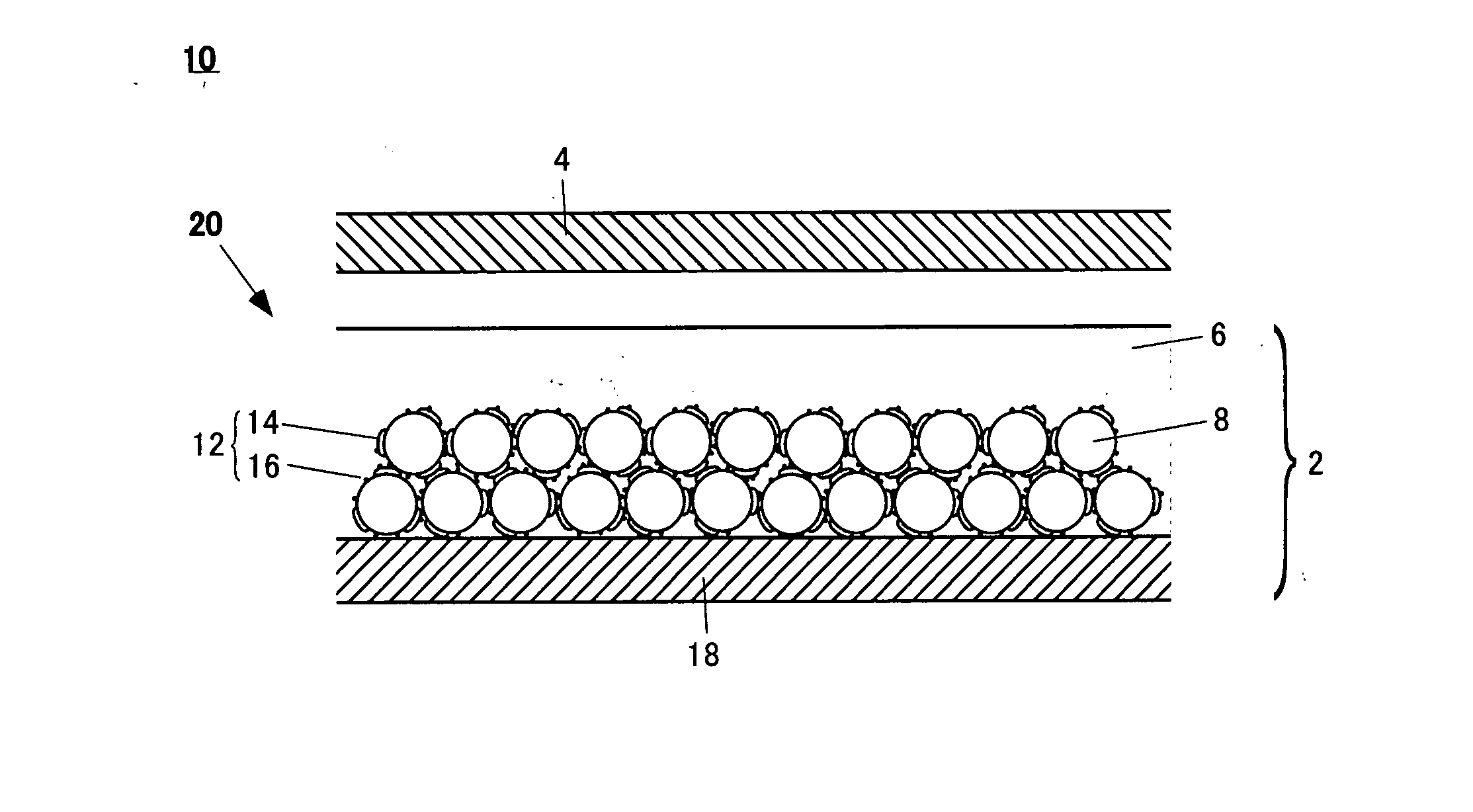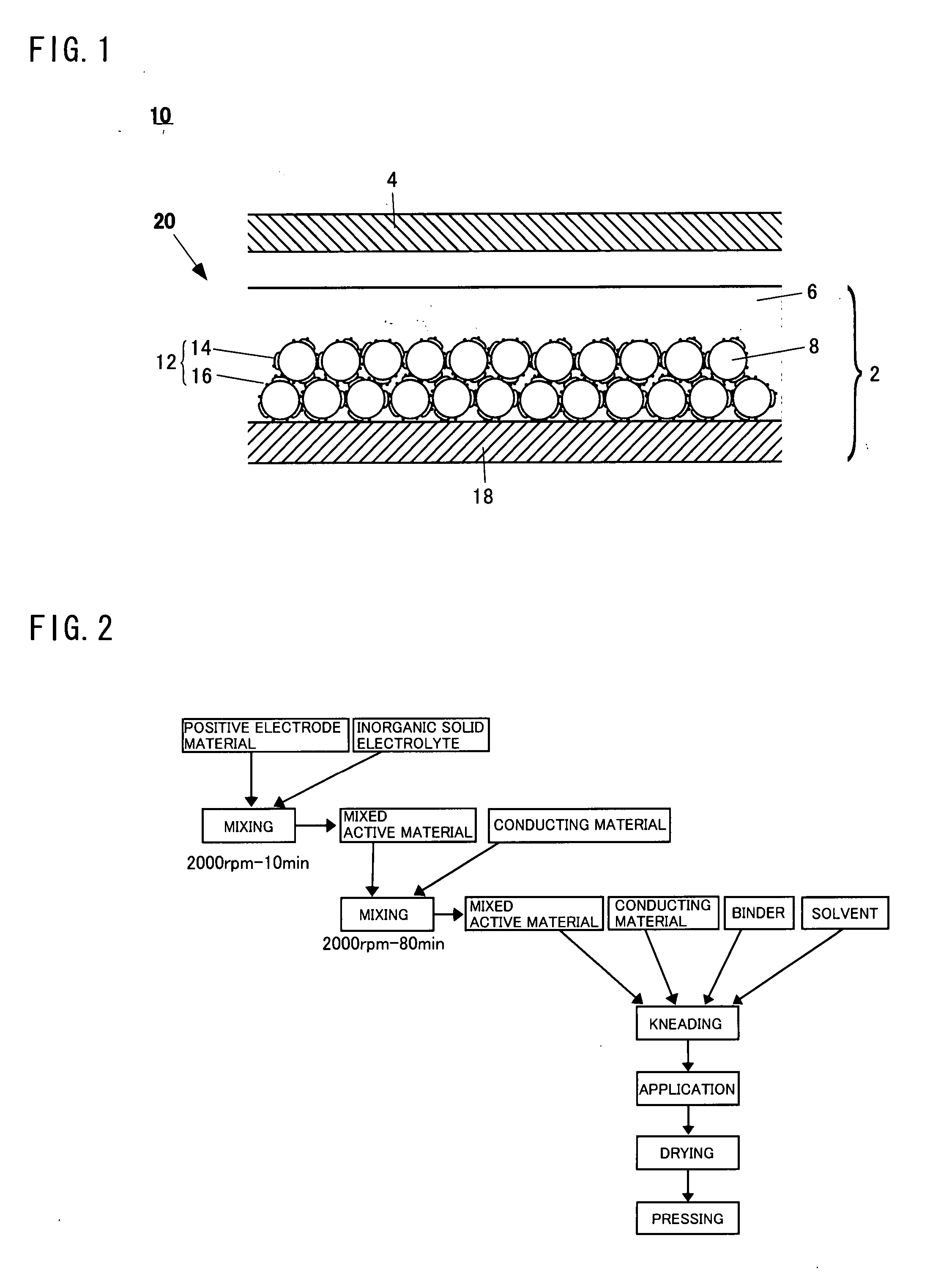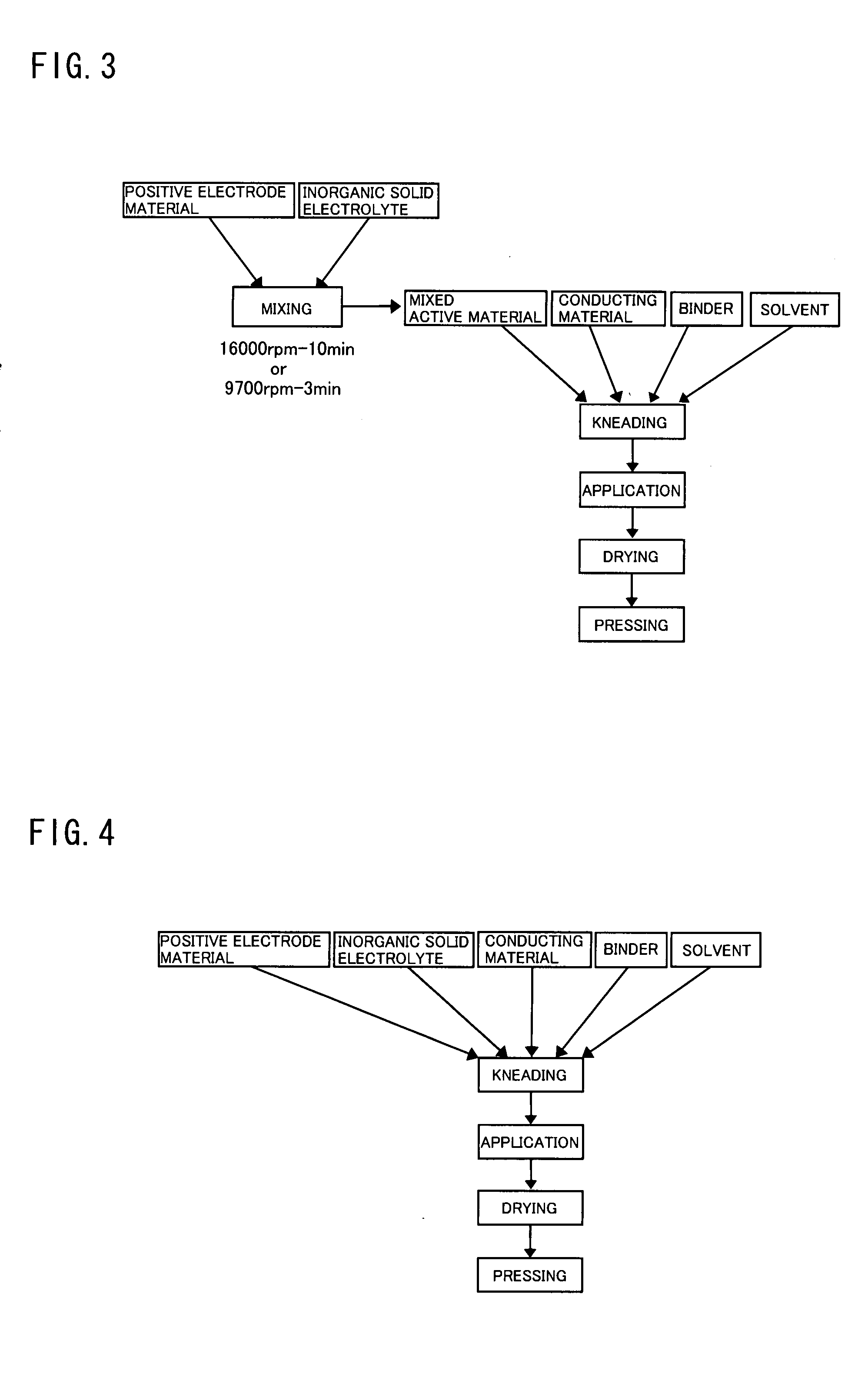Solid Polymer Electrolyte Battery And Method For Manufacturing Positive Electrode Sheet Used Therein
a solid polymer electrolyte and positive electrode technology, applied in the field of organic electrolyte batteries, can solve the problems of difficult creation of secondary batteries with a large capacity and high energy density, and achieve the effects of suppressing oxidative degradation of organic electrolyte, high energy density, and enhancing cycle characteristics
- Summary
- Abstract
- Description
- Claims
- Application Information
AI Technical Summary
Benefits of technology
Problems solved by technology
Method used
Image
Examples
working example 1
[0080] An all-solid lithium secondary battery (lithium polymer battery, LPB (lithium polymer battery)) was fabricated in order to confirm the possibility of creating a composite all-solid battery that is provided with both high energy density and high safety, and that utilizes a high-voltage positive electrode whereby the number of assembled batteries can be reduced.
[0081] [Experiment a] (Creation of a Positive Electrode Material that Uses a Positive Electrode Active Material Having Surface State (a) Described Above)
[0082] The polymer matrix used in the solid polymer electrolyte (organic electrolyte, SPE (Solid Polymer Electrolyte)) was Daiso Co. (Ltd.) P(EO / MEEGE / AGE)=82 / 18 / 1.7. The ratio of LiTFSI(LiN(SO2CF3)2) in the polymer used as the electrolyte salt was [Li] / [either oxygen]=0.06.
[0083] After the pre-mixing of LiCoO2 and Li3PO4 in a weight ratio of 20:1 in a plastic bag, the mixture was placed in a surface coating device. The mixture was then treated for 10 minutes at a rot...
PUM
| Property | Measurement | Unit |
|---|---|---|
| Fraction | aaaaa | aaaaa |
| Fraction | aaaaa | aaaaa |
| Fraction | aaaaa | aaaaa |
Abstract
Description
Claims
Application Information
 Login to View More
Login to View More - R&D
- Intellectual Property
- Life Sciences
- Materials
- Tech Scout
- Unparalleled Data Quality
- Higher Quality Content
- 60% Fewer Hallucinations
Browse by: Latest US Patents, China's latest patents, Technical Efficacy Thesaurus, Application Domain, Technology Topic, Popular Technical Reports.
© 2025 PatSnap. All rights reserved.Legal|Privacy policy|Modern Slavery Act Transparency Statement|Sitemap|About US| Contact US: help@patsnap.com



